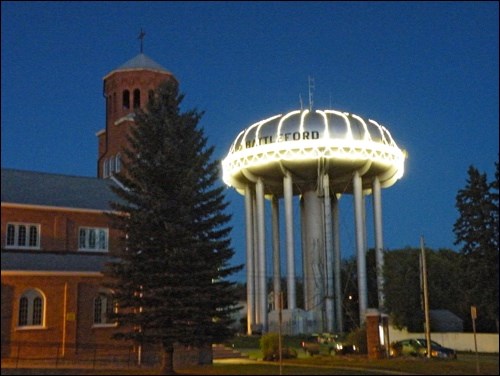The latest census numbers are in and the population of North Battleford has gone up, but not by too much.
According to the 2016 census population and dwelling statistics released Wednesday by Statistics Canada, the population of North Battleford is 14,315. That is up from 13,888 in 2011, a difference of 3.1 per cent.
As well, the number of private dwellings is 6,413, with 5,896 of them occupied.
The town of Battleford also saw its population go up. According to the latest census figures the population is now 4,429, up from 4,065 in 2011 for an increase of nine per cent. Number of private dwellings in Battleford is 1,816, with 1,755 occupied.
The figures have implications for municipal revenue sharing, with the amount that communities receive calculated based on population numbers.
As well, there would have been RCMP contract consequences for North Battleford had the city’s population hit 15,000, with the City’s cost-share increasing from 70 to 90 per cent. North Battleford is now just 685 residents away from that magic number.
Overall, the census numbers should not come as a major surprise to city officials. Their own internal estimates had North Battleford’s population running around 14,500.
For Battleford, their magic number would be 5,000. There would be RCMP contract implications in that situation as well, but there would also be an important change of status. The number 5,000 would enable the Town of Battleford to apply for city status.
That prospect is now a very real one. If the current growth rate of roughly nine per cent continues, we could be in a position to refer to the “City of Battleford” after the 2026 census. All that is needed is an increase of 571 residents.
For other communities in the area, the population of Unity is 2,573 (up 7.7 per cent), Wilkie is 1,219 (down 6.3 per cent), Maidstone is 1,185 (up 2.5 per cent), Cut Knife is 573 (up 10.8 per cent), Biggar is now 2,226 (up three per cent), Blaine Lake is 499 (down 2.2 per cent), Maymont is 138 (down 5.5 per cent), Radisson is 514 (up 1.8 per cent), Spiritwood is 786 (down 14.2 per cent), St. Walburg 689 (down 3.8 per cent), Edam 480 (up 8.1 per cent) Turtleford 496 (down 5.5 per cent) and Hafford is 407 (up 2.5 per cent).
Around Jackfish Lake, Aquadeo’s population came in at 111, Cochin 148, Meota 304 and Metinota 80.
Overall, the population of Saskatchewan is 1,098,352, up 6.3 per cent from 2011’s number of 1,033,381.
The only province in Canada to have a higher increase was Alberta, which grew 11.6 per cent. Among territories, Nunavut had the highest growth of all at 12.7 per cent.
Among major cities in the province, Saskatoon’s population is now 246,376, up 10.9 per cent, while Regina is at 215,106, up 11.4 per cent. When counting the census metropolitan areas, Saskatoon’s metro population is 295,095 (up 12.5 per cent) while Regina is at 236,481 (up 11.8 per cent).
Two communities within Saskatoon’s metro area recorded some big increases in population.
Warman’s population is now 11,020, up 55.1 per cent from 2011, while Martensville is at 9,645, up 25 per cent.
Another community in Saskatchewan showing a big increase is Lloydminster. The population grew 20.4 per cent on the Saskatchewan side to 11,765. Counting the entire census agglomeration area, the population is 34,583.
Overall, Canada’s population in 2016 is 35,151,728, up five per cent from 33,476,688.
The full details of the census can be found at the Statistics Canada website at statscan.gc.ca.




